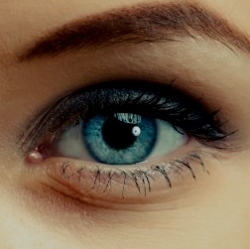
A biotechnology company is offering a whole new service to police departments. Virginia-based Parabon NanoLabs’ Snapshot service allows police to send Parabon NanoLabs DNA samples taken from crime scenes. From that DNA, the company reconstructs a guess of what the person’s face looks like.
"It’s giving investigators new leads," Ellen McRae Greytak, Parabon’s director of bioinformatics, tells Popular Science. "The idea of Snapshot is to give investigators a new way to use DNA." Parabon NanoLabs has worked on 10 cases, each for different U.S. police departments, Greytak says. The first department to release a face prediction publicly is the Columbia, South Carolina, police. The department published this poster made from the DNA of a "person of interest" in the unsolved murder of 25-year-old Candra Alston and her three-year-old daughter in 2011:
In the past few years, researchers have made big strides toward being able to reconstruct people’s appearance from their DNA. Parabon NanoLabs isn’t the first company to think to offering such services to police. Biotech companies Identitas and Illumina both offer eye and hair color guesses from DNA samples. Parabon NanoLabs seems to be unique in offering an illustrated face estimate.
Outside experts say the illustrations are not likely to be accurate, however, based on the research that’s been done about the genetics of human faces. Greytak counters that because of proprietary research, Snapshot illustrations are more accurate than one might think—and anyway, they need only to be close enough to jog the memory of a witness. Snapshot hasn’t yet been validated by outside groups, which researchers Popular Science talked to believe should be the next step.
The most controversial aspect of Snapshot is its prediction of the shape of a face. Eye color and hair color have been scientifically shown to be fairly predictable already. However, all the scientific literature that’s publicly available suggests researchers are only starting to get a handle on how to predict a person’s face shape from his genetics.
"Based on what the published research shows, I would be very skeptical that at this moment, someone has this knowledge," says Manfred Kayser, a biologist at the Erasmus Medical Center in the Netherlands who developed methods for guessing hair and eye color that Illuminas and other companies use.
